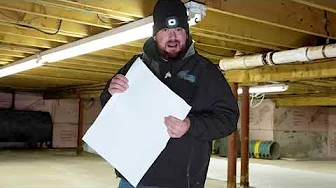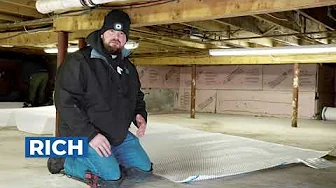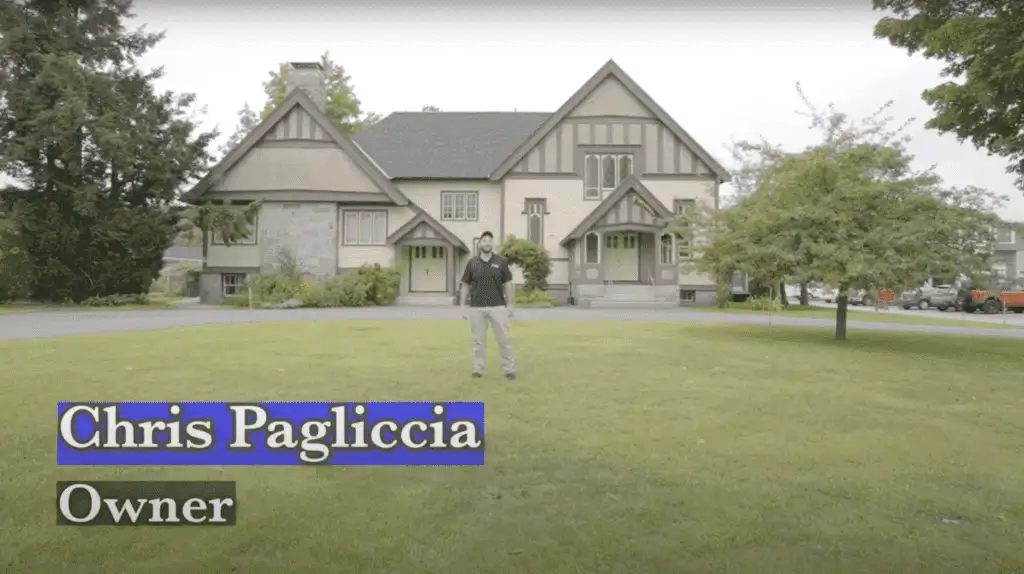Foundation Crack Repair Concord MA
Cracks in a foundation can be more than just an eyesore. Left unchecked, they may lead to structural problems, water infiltration, or even pest intrusion. Homeowners in Concord, MA, know the importance of maintaining a solid foundation to protect their property from New England’s shifting weather patterns and natural wear and tear. Addressing foundation cracks early is essential for preserving the safety and value of your home. Here’s what you need to know.
Real People - Real Great Results
Crawl Space Video Playlist
Common Causes of Foundation Cracks
Foundation cracks don’t just appear out of nowhere. They’re almost always the result of forces acting on your home—both internal and external. If you’ve noticed cracks forming, understanding the root cause is the first step to tackling the problem. Here’s a breakdown of the usual suspects:
- Soil Shifting: The ground beneath your house is constantly moving. In Concord, MA, freeze-thaw cycles are relentless, expanding and contracting the soil as temperatures swing from bitter cold to warm. Combined with poor soil compaction during construction, this movement can wreak havoc on your foundation, eventually causing it to split under the stress. Some cracking might be inevitable, but ignoring it isn’t an option.
- Water Damage: Water has a knack for finding weaknesses. When drainage around your home is inadequate, heavy rain or melting snow increases what’s called hydrostatic pressure—the relentless force of water pressing against your foundation walls. As that pressure builds, cracks form, providing an entry point for even more water. Left untreated, this can spiral into a host of other issues, from mold growth to structural damage.
- Thermal Expansion: Concrete might seem indestructible, but it’s surprisingly sensitive to temperature changes. During hot months, it expands, pushing against itself; during cold months, it contracts, pulling apart. Over time, this repetitive stress can cause cracks to develop. Picture bending a paperclip back and forth until it breaks—it’s a similar idea, just slower and on a much larger scale.
- Tree Roots: If your property features mature trees or large shrubs, their roots may be doing more than seeking water. Roots can push against foundations or draw moisture from the surrounding soil, causing it to dry out and shrink. Either way, the foundation ends up under pressure, and cracks can occur. Those towering maples might be majestic, but their roots can pack a punch.
Each of these causes is a piece of the bigger puzzle. Identifying what’s behind your particular situation is crucial, because not all cracks are created equal, and neither are their solutions.
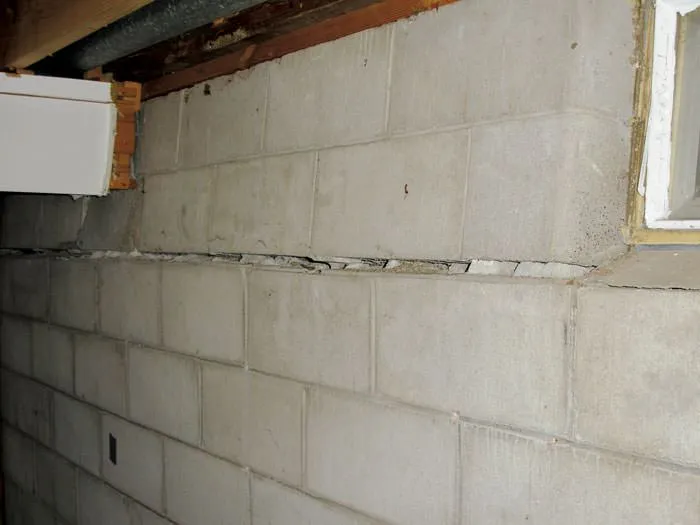
Types of Foundation Cracks
Understanding the type of crack in your foundation is key to gauging the severity of the issue. Not all cracks are a red flag, but some demand immediate attention. Here’s a rundown of the most common types:
- Hairline Cracks: These are the smallest of the bunch, often appearing as faint lines that barely break the surface. Caused by minor settling or shrinkage as concrete cures, they’re typically non-structural. While they don’t scream urgency, periodic monitoring is smart—you don’t want them growing into something more worrisome.
- Vertical Cracks: These are the most textbook cracks you’ll encounter. Usually a sign of normal settling, they often run straight up and down (or slightly diagonal) your foundation wall. The good news? They’re usually less severe and easier to repair. That said, if water starts to seep through, take action before things escalate.
- Horizontal Cracks: If cracks are running parallel to the ground, that’s a different ballgame. Horizontal cracks tend to signal trouble—typically the result of external pressure from soil or moisture. They weaken the overall structure and shouldn’t be ignored. These almost always mean it’s time to call in the pros.
- Diagonal Cracks: Found near corners or areas where uneven settling has occurred, diagonal cracks point to shifting issues within your foundation. The angle matters: the steeper the slope of the crack, the more likely you’re dealing with substantial movement. If you spot one, it’s worth investigating further.
By identifying the type of crack, you can better assess its risk and determine whether it’s a cosmetic flaw or a hidden menace. Either way, staying ahead of the problem is always your best bet.
Why Timely Repairs Matter
Foundation cracks are like whispers of a larger problem. Ignore them, and those whispers can become deafening roars—your home’s way of telling you that something’s not right. While a tiny hairline crack may seem harmless today, time and neglect can turn it into an expensive nightmare tomorrow.
- Structural Weakness: The most obvious risk of procrastinating on foundation crack repairs is structural instability. Your foundation isn’t just concrete; it’s the backbone of your home, holding everything in place. As cracks widen, they compromise this stability. Floors may become uneven, doors and windows might jam, and walls can start to bow or bulge. What starts as a minor inconvenience quickly escalates into full-blown damage, demanding more extensive—and costly—repairs.
- Water Intrusion: Even the smallest crack is big enough for water to sneak through. New England winters in Concord, MA, amplify this risk, as melting snow and rain creep into your basement or crawl space. Once inside, water doesn’t just sit quietly. It invites mold, mildew, and rot into the picture. These unwelcome guests can wreak havoc on stored belongings and even pose health risks to your family. Worse yet, each freeze-thaw cycle pushes the crack to expand further, accelerating the damage.
- Increased Costs: Think of foundation repair like a leaky faucet: the longer you wait, the more you lose. Small cracks are relatively easy to fix, often requiring simple sealing techniques like epoxy or polyurethane injections. But as the damage progresses, solutions grow more invasive and expensive—things like underpinning, carbon fiber reinforcement, or drainage overhaul. You could go from a $500 repair job to a $15,000 foundation stabilization project simply by waiting too long.
- Peace of Mind: Finally, timely repairs offer more than just financial and structural protection—they deliver peace of mind. Knowing your foundation is strong and secure lets you sleep easier, especially during heavy rain or winter storms. The cost of addressing problems early is not just an investment in your home, but an investment in your daily quality of life.
Bottom line: don’t gamble with your foundation. Cracks aren’t just flaws—they’re warnings. Catch them early, fix them fast, and save yourself the headache, stress, and cost of letting them grow unchecked.
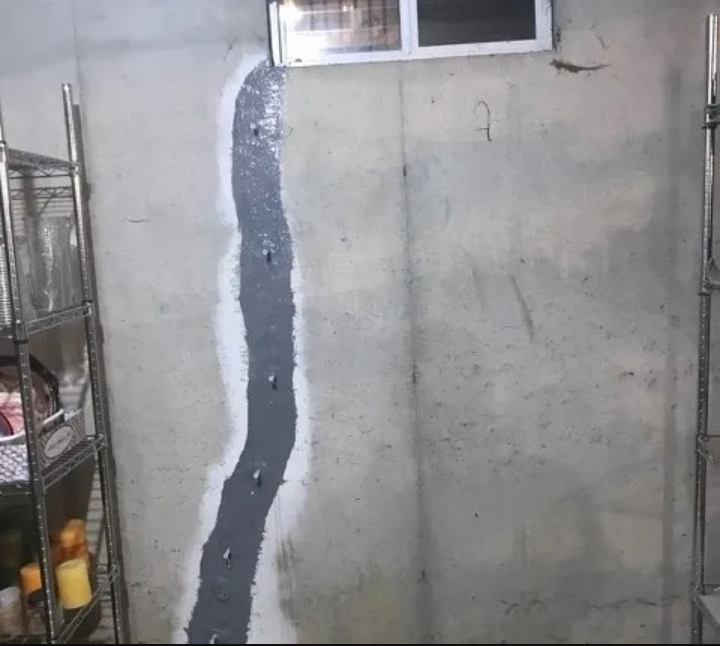
Repair Techniques for Foundation Cracks
Keeping your foundation intact isn’t rocket science, but it does demand the right approach. Not all cracks scream disaster, though some whisper warnings you’d be unwise to ignore. Here are the go-to methods for tackling those pesky breaches in your home’s underbelly.
- Epoxy Injections: Epoxy injections are the duct tape of foundation crack repair—but way more permanent. They’re perfect for narrow, non-structural cracks that just need sealing up to keep moisture out. The epoxy bonds the crack, essentially welding the concrete back together. Bonus: it’s a clean finish that doesn’t shout, “Hey, I had a problem here.”
- Polyurethane Foam Injections: If leaks are an issue, polyurethane foam steps up. This stuff is flexible, unlike brittle epoxy, and it expands to fill cracks while blocking water from sneaking in. It’s a solid choice for hairline cracks that act like tiny rivers after a storm. Just make sure it’s applied properly—good foam is useless with bad technique.
- Carbon Fiber Reinforcement: For cracks that laugh in the face of simple injections, carbon fiber strips bring the muscle. These are especially effective for horizontal cracks and structural repairs. Think of them as a suit of armor for your foundation, bolstering weak spots and stopping further shifts. It’s a no-nonsense solution for no-nonsense issues.
- Exterior Waterproofing: Some cracks are just symptoms of a bigger water problem lurking outside. Exterior waterproofing involves applying a membrane to the outer foundation wall, cutting the problem off at the source. Yes, it’s more work, but it’s also an investment in keeping water where it belongs—outside.
- Foundation Underpinning: When the very ground beneath your home betrays you, underpinning is the cavalry. This involves stabilizing the foundation with piers, pilings, or other supports, ensuring your house isn’t going anywhere, no matter how much the soil shifts. It’s not a quick fix, but for severe settling issues, it’s the only move that makes sense.
Repairing foundation cracks is part problem-solving, part prevention—always aiming for a future where you’re not revisiting the same issue. Whether you’re sealing a hairline crack or stabilizing an entire corner of your house, the right fix at the right time pays massive dividends long-term.
When To Call a Professional
Most homeowners can handle minor foundation issues with a bit of research and some basic tools. But let’s be real—there’s a fine line between a small DIY project and a structural nightmare. Here’s the rule of thumb: if you’re second-guessing the severity of a foundation crack, it’s probably time to bring in the pros.
Some red flags are non-negotiable: cracks wider than 1/8 inch are a clear indicator of trouble, especially if they’re growing rapidly or paired with other signs like bowing walls or stuck windows. Horizontal cracks? They’re a big deal—think “structural stress from soil pressure” big. Persistent water seepage despite your best efforts? That’s another time to step aside.
Foundation repair isn’t the kind of thing you want to leave to guesswork. Professionals bring specialized equipment, experience, and an understanding of regional quirks—particularly helpful in Concord, MA, where freeze-thaw cycles and clay-heavy soils can wreak havoc. Getting a pro’s evaluation isn’t just good sense—it’s an investment in your home’s long-term stability and value. Sometimes it’s better (and cheaper in the long run) to admit, “This one’s out of my league,” and let the experts handle it.

Preventing Foundation Cracks
Let’s face it: you can’t control the ground beneath your home, but you can stack the odds in your favor. Cracks don’t just appear out of nowhere — they’re the result of environmental forces, construction quirks, or plain old neglect. With a little upfront effort, many of these problems can be kept at bay. Here’s how to play defense and keep your foundation solid for the long haul.
- Ensure Proper Drainage: Water is your foundation’s worst enemy. If your gutters are clogged or your downspouts dump water like a firehose at the base of your house, you’re asking for trouble. Clean your gutters regularly, and make sure downspouts channel water at least five feet away from the foundation. Sloping the ground around your home by just one inch per foot can also work wonders.
- Control Moisture Levels: Soil thrives on balance. Too dry, and it shrinks and pulls away from your foundation. Too saturated, and it swells, putting extra pressure on the walls. Maintain consistent moisture in the soil by watering during droughts, but don’t overdo it. Your foundation isn’t a pool — keep excess water out of the equation.
- Monitor Tree Growth: A shady property might look nice, but those towering oaks could be trouble. Tree roots seek water relentlessly, and they’ll creep under your foundation if they’re close enough. The rule of thumb? Plant large trees no closer than their expected canopy spread. If you already have an overachieving tree nearby, consider root barriers to curb further encroachment.
- Seal Early: That tiny crack in the corner of your basement isn’t going to seal itself, and ignoring it only invites bigger problems. Hairline cracks are easy to patch with DIY products like epoxy or polyurethane sealant. Catch them early, and they’re one less headache to deal with later.
Think of these measures as a workout routine for your home. You’ll still encounter the occasional challenge, but consistent maintenance keeps most cracks from turning into full-blown disasters.
The Importance of Local Expertise
When it comes to foundation crack repair, where you live matters. Concord, MA, faces challenges unique to New England—frost-heaving winters, humid summers, and unpredictable rainfall all conspire to stress and shift the ground beneath your home. Hiring a foundation specialist with local expertise ensures that your repairs are not just effective but tailored to Concord’s specific conditions.
For instance, a professional familiar with the region knows how to tackle issues like frost heave, where expanding soil during freeze-thaw cycles creates pressure on your foundation. They understand the area’s prevalence of clay-heavy soils, which expand when wet and shrink when dry, potentially causing cracks to widen over time. These nuances aren’t just textbook scenarios; they’re everyday realities for Concord homeowners.
Additionally, local pros are well-versed in navigating Massachusetts building codes and regulations. They can ensure that any repair or modification meets legal requirements, saving you from potential headaches down the road. More importantly, they’re equipped to implement preventative measures that align with the area’s climate, like improved drainage or weatherproof barriers.
This isn’t a one-size-fits-all job. Foundation repairs done without considering Concord’s quirks might hold up for a season but fail in the long term. By choosing local expertise, you’re not just getting a fix—you’re investing in the longevity of your home’s most critical structure.
Conclusion
Your foundation isn’t just another part of your home—it’s the backbone holding everything together. Ignoring cracks, no matter how minor they appear, can lead to a cascade of avoidable problems: structural instability, moisture issues, and escalating repair costs. The good news? Most of these headaches can be avoided with early action and a little vigilance.
For homeowners in Concord, MA, the stakes are even higher. New England doesn’t play nice with homes, throwing everything from frost heaves to relentless spring rains at your foundation. Staying ahead of the game means keeping a sharp eye on changes, addressing small cracks before they turn into big problems, and calling in professionals when the work outgrows your toolbox.
At the end of the day, a stable foundation is peace of mind. It’s knowing that your home is safe, dry, and secure—ready to weather decades more of Concord’s unforgiving seasons. Keep cracks in check, and your house will thank you for it.
Reviews from Happy Customers
Our top priority is customer satisfaction, and we work closely with clients to understand their unique needs and goals.




